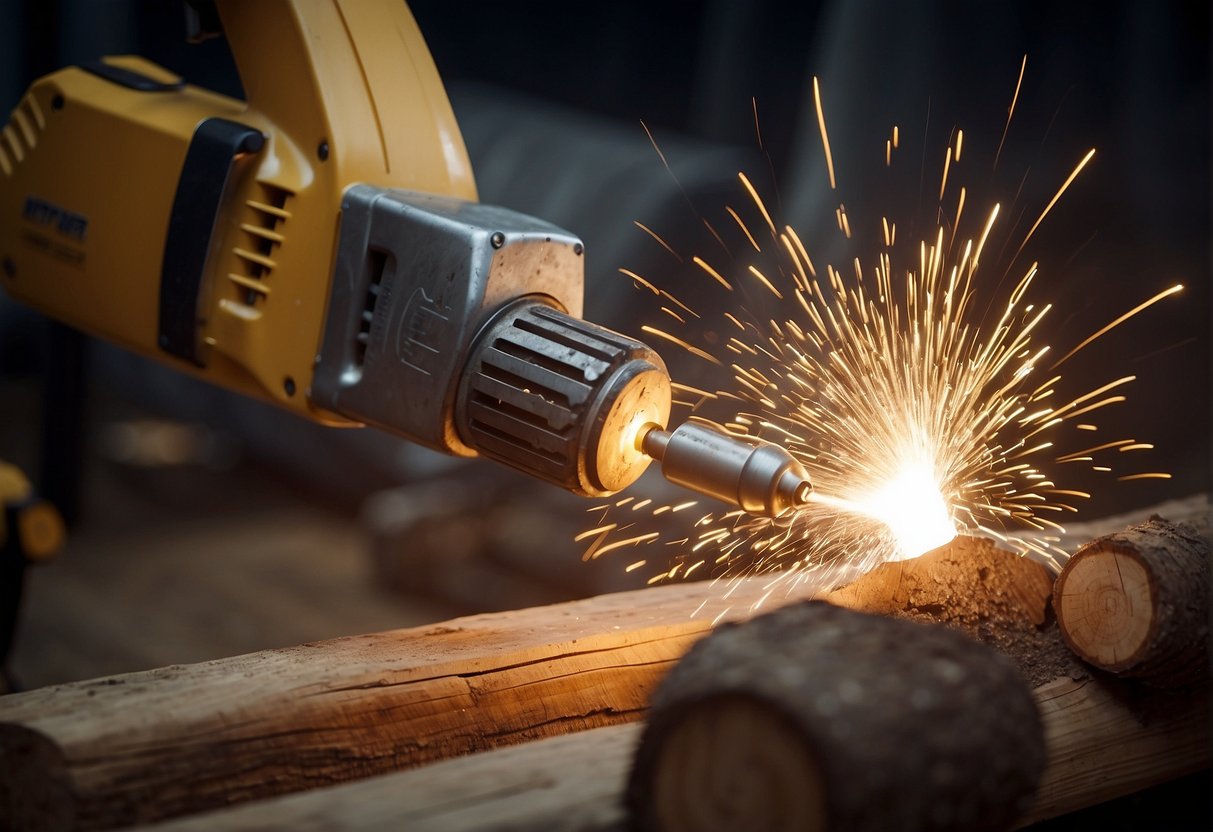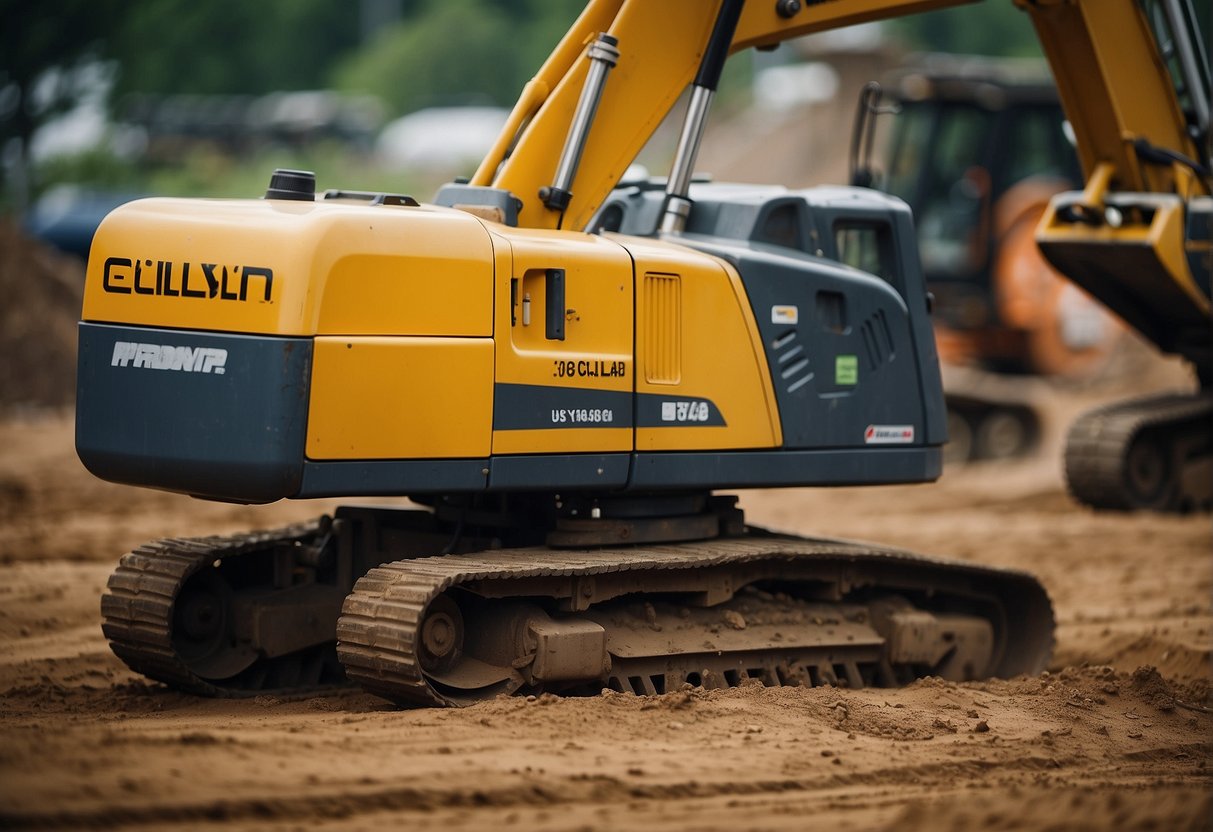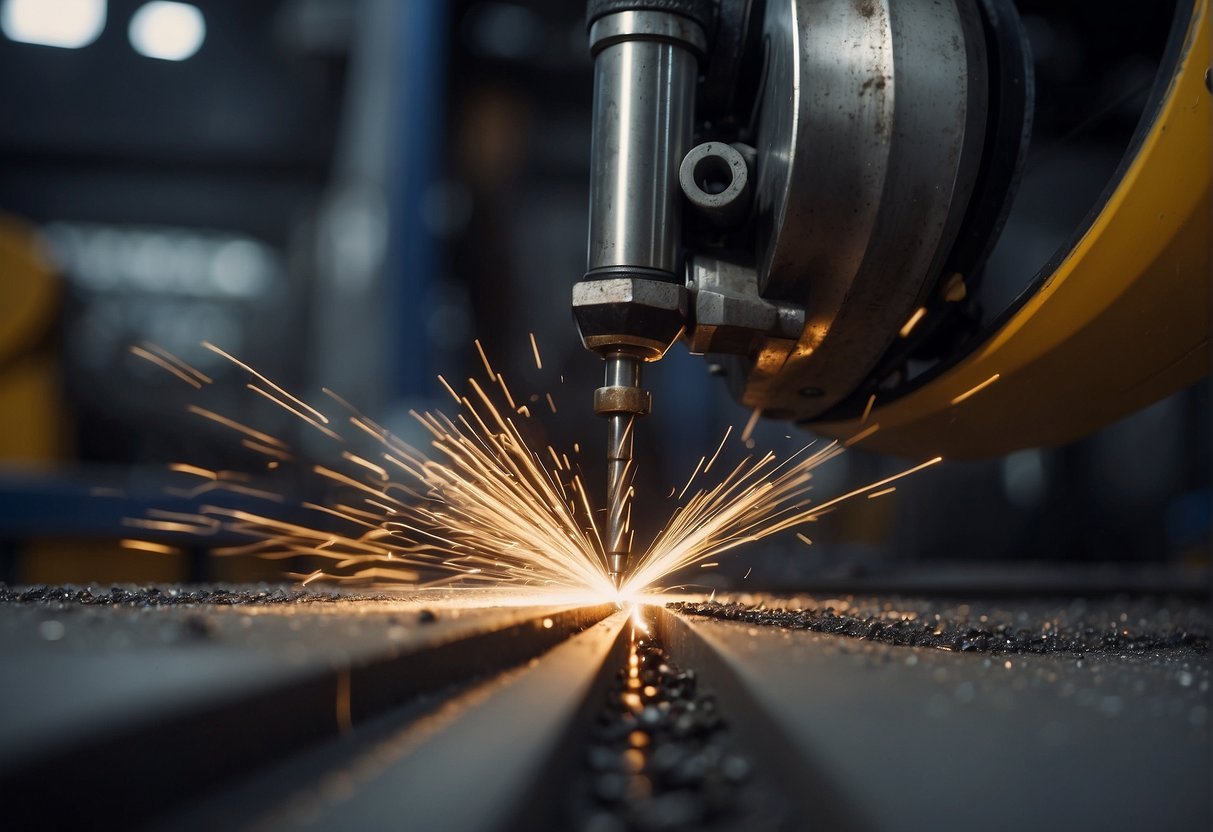When it comes to creating holes in materials, two common methods are drilling and boring. While they may seem similar, there are some key differences between the two processes. As someone who has worked with both techniques, I can confidently say that understanding the distinctions between drilling and boring is crucial for achieving the desired results.
Fundamentally, drilling involves creating a hole by removing material from a workpiece with a rotating drill bit. On the other hand, boring is the process of enlarging an existing hole by cutting away material with a boring tool. While both techniques involve the use of cutting tools, the way they remove material and the types of holes they create are different. Understanding these differences is important for selecting the right technique for a particular application.
Key Takeaways
- Drilling and boring are two different processes for creating holes in materials.
- Drilling involves creating a hole from scratch with a rotating drill bit, while boring enlarges an existing hole.
- Understanding the differences between drilling and boring is crucial for selecting the right technique for a particular application.
Fundamentals of Drilling and Boring
Defining Drilling
Drilling is a machining process that involves creating holes in a workpiece using a rotating cutting tool called a drill bit. The drill bit is pressed against the workpiece, and as it rotates, it cuts through the material to create a hole. Drilling is a common process used in various industries such as construction, automotive, and manufacturing.
There are different types of drills and drill bits available, each designed for specific materials and applications. For example, twist drills are the most common type of drill bits and are suitable for drilling through metal, wood, and plastic. On the other hand, masonry drill bits are used for drilling through concrete, brick, and stone.
Understanding Boring
Boring is another machining process used to enlarge or modify an existing hole in a workpiece. Unlike drilling, boring uses a single-point cutting tool to remove material from the workpiece. The cutting tool is rotated and fed into the workpiece to create the desired hole size and shape.
Boring is commonly used to achieve precise tolerances and surface finishes in applications such as engine cylinders, hydraulic cylinders, and gun barrels. There are different types of boring tools available, including line boring machines, horizontal boring machines, and jig borers.
In summary, drilling and boring are two different machining processes used to create or modify holes in a workpiece. While drilling is used to create new holes, boring is used to enlarge or modify existing holes. Both processes require specialized tools and techniques to achieve the desired results.
Tools and Machinery
As a machinist, I know that drilling and boring are two different processes that require different tools and machinery. In this section, I will discuss the tools and machinery used for drilling and boring.
Drill Bits and Boring Bars
Drilling is the process of creating a hole in a material using a drill bit. Drill bits come in various sizes, shapes, and materials. The most common materials used for drill bits are high-speed steel (HSS) and carbide. HSS drill bits are suitable for drilling soft materials like wood, plastic, and aluminum. Carbide drill bits are ideal for drilling hard materials like steel, stainless steel, and cast iron.
Boring, on the other hand, is the process of enlarging an existing hole using a boring bar. Boring bars come in different sizes and shapes. The most common types of boring bars are solid and indexable. Solid boring bars are made of one piece of material and are suitable for small diameter holes. Indexable boring bars have replaceable cutting inserts and are ideal for larger diameter holes.
Machines for Drilling and Boring
Drilling machines come in different types, including drill presses and milling machines. A drill press is a machine that drills holes in a material. It has a fixed drill bit that moves up and down to create a hole. A milling machine, on the other hand, is a machine that can perform a variety of operations, including drilling, boring, and milling. It has a rotating cutter that removes material from the workpiece.
Boring machines include horizontal boring mills and lathes. A horizontal boring mill is a machine that can bore holes in a horizontal direction. It is suitable for large diameter holes and is commonly used in the aerospace and automotive industries. A lathe is a machine that can turn a workpiece and perform operations like drilling, boring, and threading.
Accuracy is crucial in both drilling and boring. Reamers are often used to achieve high accuracy in both processes. A reamer is a cutting tool that is used to smooth and enlarge a hole to a precise size.
In conclusion, the tools and machinery used for drilling and boring depend on the material and the size of the hole. Machining accuracy is essential in both processes, and reamers are often used to achieve high precision.
Applications and Industries
When it comes to drilling and boring, both processes have a wide range of applications and are used across various industries. In this section, I will discuss the industrial applications and the role of drilling and boring in manufacturing.
Industrial Applications
Drilling plays a pivotal role in numerous industries and applications, including manufacturing, construction, mining, and oil and gas exploration. In manufacturing, drilling is essential for producing holes in various components, from engine blocks in automotive manufacturing to precision parts in aerospace. Drilling is also used in the electronics industry for creating holes in printed circuit boards.
On the other hand, boring is primarily used in the woodworking and metalworking industries. In woodworking, boring is used to create holes for dowels, screws, and other fasteners. In metalworking, boring is used to enlarge existing holes or to create precise holes with tight tolerances.
Role in Manufacturing
Drilling and boring are essential processes in manufacturing. Drilling is used to create holes in various materials, including metal, plastic, and wood. In the automotive industry, drilling is used to create holes in engine blocks, cylinder heads, and other components. In the aerospace industry, drilling is used to create holes in aircraft parts, such as wings and fuselages.
Boring, on the other hand, is used to enlarge existing holes or to create precise holes with tight tolerances. In the medical industry, boring is used to create precise holes in bone for the insertion of screws and other implants. In the oil and gas industry, boring is used to create holes for drilling and exploration.
In conclusion, drilling and boring are essential processes in various industries, including automotive, aerospace, construction, electronics, medical, woodworking, and oil and gas. While both processes have different applications, they play a vital role in manufacturing and are critical for creating precise holes with tight tolerances.
Technical Aspects
Precision and Tolerances
When it comes to drilling and boring, precision and tolerances are crucial factors to consider. Both processes involve removing material from a workpiece to create a hole, but the level of accuracy required for each process may differ. Drilling is generally faster but less precise than boring. Boring is ideal when precise tolerances are required, as it provides remarkable surface finish and diameter accuracy.
In drilling, the hole diameter can vary due to the vibration caused by the rotating drill bit. Moreover, the drill bit may wander off-center, creating a hole that is not perfectly round. This can be problematic when tight tolerances are required, such as in the production of engine cylinders or hydraulic components. In contrast, boring is less prone to vibration and produces a more accurate hole diameter.
Speed and Finish
Speed and finish are also important factors to consider when choosing between drilling and boring. Drilling is generally faster than boring, which means it is often the preferred choice for creating holes that do not require high levels of accuracy. However, drilling may produce a rougher surface finish than boring, which may require additional finishing operations.
Boring, on the other hand, is slower than drilling but produces a smoother surface finish. This is because boring removes material from the workpiece in a controlled manner, which reduces the risk of chatter marks or other surface imperfections. Additionally, the cutting tools used in boring are designed to evacuate chips and coolant more efficiently, which reduces the risk of chip buildup and heat buildup.
In summary, both drilling and boring have their advantages and disadvantages. Drilling is generally faster but less precise than boring, while boring is slower but produces a smoother surface finish and more accurate hole diameter. The choice between the two processes will depend on the specific requirements of the application, such as the required level of accuracy, hole diameter, and surface finish.
Advanced Techniques
Reaming and Finishing
When it comes to precision machining operations, reaming and finishing are essential techniques to achieve the required surface quality and tighter tolerances. Reaming is a cutting process that uses a rotary cutting tool to enlarge a cylindrical hole in a workpiece. The process removes a small amount of material to improve the surface finish and accuracy of the hole.
Finishing, on the other hand, is a machining operation that modifies holes or surfaces to achieve a desired shape, size, or surface quality. It involves removing small chips of material to improve the surface finish or to create complex shapes. Finishing can be done using various techniques such as grinding, honing, and lapping.
Both reaming and finishing techniques are commonly used in drilling and boring operations to achieve better surface quality and tighter tolerances. They are ideal for modifying holes, plunging, and contour boring to create complex shapes.
Complex Drilling Operations
Drilling and boring are versatile machining operations that can be used to remove material and create holes in a wide range of workpieces. However, complex drilling operations require advanced techniques and specialized equipment to achieve the desired results.
Horizontal boring is a drilling technique that involves drilling a hole horizontally through a workpiece. It is commonly used in the manufacturing of large parts such as engine blocks and turbine housings.
Twist drilling is a drilling technique that uses a helical cutting edge to remove material and create holes. It is the most common drilling technique and is used in a wide range of applications.
Gun drilling is a drilling technique that uses a long, thin cutting tool to create deep, straight holes. It is commonly used in the manufacturing of firearms, aerospace components, and medical implants.
Line boring is a boring technique that involves machining a series of holes in a straight line. It is commonly used in the manufacturing of engine blocks and cylinder heads.
Contour boring is a boring technique that involves machining a series of holes in a curved or irregular shape. It is commonly used in the manufacturing of complex parts such as turbine blades and impellers.
In complex drilling operations, measurement and quality control are crucial to ensure that the workpiece meets the required specifications. Tighter tolerances and surface quality can be achieved by using advanced techniques such as reaming and finishing.
Frequently Asked Questions
What distinguishes a boring operation from a drilling operation in terms of purpose and outcome?
Boring and drilling are two similar yet distinct machining processes. Drilling is used to create new holes, while boring is used to enlarge and refine existing holes. Boring is typically used when a hole needs to be made with precise dimensions, such as when creating a bearing or a cylinder.
How do the costs compare between drilling and boring processes?
The cost of drilling versus boring can vary depending on the size of the hole, the material being machined, and the precision required. In general, drilling is less expensive than boring, as it requires less specialized equipment and can be completed more quickly. However, the accuracy and precision of boring can result in a higher-quality finished product, which may justify the additional cost.
What are the key differences between a boring drill bit and a standard drill bit?
Boring drill bits are designed to remove material from an existing hole, while standard drill bits are used to create new holes. Boring drill bits are typically larger and have a more complex shape than standard drill bits, allowing them to remove material more efficiently and accurately. Additionally, boring drill bits often have adjustable cutting edges, allowing for greater precision and control.
In what scenarios is reaming used in conjunction with drilling and how does it differ from both?
Reaming is a machining process that is often used in conjunction with drilling and boring to refine and smooth out the interior of a hole. Reaming is typically performed after drilling or boring to improve the accuracy and finish of the hole. Unlike drilling and boring, which remove material to create a hole, reaming removes a small amount of material to refine and improve an existing hole.
When should one opt to bore a hole rather than drill in machining tasks?
Boring is typically used when a hole needs to be made with precise dimensions or when the material being machined is difficult to work with. Boring can also be used to create more complex shapes, such as tapered or stepped holes. In general, boring is preferred over drilling when accuracy and precision are critical, or when the material being machined is particularly hard or brittle.
In the context of a lathe, how does the boring process differ from drilling?
In a lathe, the boring process is used to create precise, smooth holes in a workpiece. The process involves mounting a boring tool on the lathe and using it to remove material from an existing hole. Drilling, on the other hand, is used to create new holes in a workpiece. Unlike drilling, which can be performed quickly and with minimal precision, boring requires careful attention to detail and a high degree of accuracy.

Hi, I’m Sal Muller of Tooltrip.com. My DIY experience led me to understand essential power tools for home projects. Tooltrip.com guides enthusiasts and professionals in choosing right tools for any job. I provide concise top tool reviews for easier, efficient DIY.




